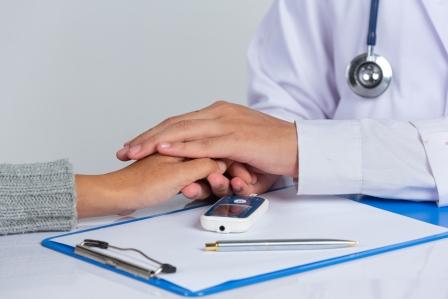Today, portable home glucometers allow you to check your blood sugar anytime and as many times a day as a person needs. These home diagnostics significantly affected the lives of people with diabetes, made the prevention of complications of the disease much more effective.
Sugar in the blood can be checked in the clinic – this is what doctors offer to do to healthy people regularly. However, as practice shows, many do not comply with this requirement, as such analysis takes a long time. Therefore, a home glucometer can be useful and a healthy person.
Prevalence of diabetes

Diabetes mellitus is a dangerous disease with severe complications, including myocardial infarction, trophic ulcers (diabetic foot), gangrene, and others. According to the World Health Organization, diabetes is one of the ten most common causes of death worldwide.
Doctors identify two types of the disease:
- Type 1 diabetes (insulin-dependent) develops at a young age. Caused by the disease of significant disorders in the pancreas – the body secretes antibodies that destroy the cells responsible for insulin production. It’s a very severe form of the disease.
- Type 2 diabetes is usually not as serious. It develops in the elderly and is associated with the wrong lifestyle, which affects the pancreas – beginning to fail in insulin production.
Most often occurs is the 2nd type. When we talk about preventive measures, we are talking about it because it is impossible to prevent the development of type 1 diabetes.
Diabetes risk groups
Since type 2 diabetes is often asymptomatic in the early stages, many people are unaware of such a disease. Moreover, its development is preceded by a long period of disruption of carbohydrate metabolism (on average 7-12 years), during which the disease is quite preventable. That is why blood sugar control with a convenient glucometer is not an extra measure for many but a perfectly reasonable way to monitor their health.
Significantly increase the risk of diabetes factors:
- heredity.
- Age over 45 years.
- Overweight.
- Wrong diet (abundance of simple carbohydrates: white bread, pasta, sweets).
- Overeating.
- Alcohol.
- A little active way of life.
- Pancreatic diseases, in particular, chronic pancreatitis.
People at risk need to monitor their blood sugar levels to prevent diabetes systematically. Therefore, buying a home glucometer, in this case, is mandatory.
Blood sugar control
Depending on the person’s condition, his predisposition to the disease, the optimal frequency of blood testing is determined. For example, patients with type 1 diabetes in some cases require up to 5 measurements per day, and patients with type 2 – enough one diagnosis in 1-2 days.
For healthy and young people, the minimum number of checks is once a year. People after the age of 40 normally should check sugar every few months. However, if you are at risk, the glucometer should be used every 1 month, and, of course, it is better if it will always be at hand. If the indicators go beyond the norm, a long diagnosis is required – for 1-2 weeks, the blood sugar level should be checked daily and several times a day.
The blood sugar rate depends on your age and whether you have taken an analysis for an empty stomach or after a meal. Healthy fasting rates vary as:
- Children under the age of 14 – 3.3-5.5 mmol/L.
- Adults – 3.8-5.5 mmol/L.
- Elderly (over 60 years old) – the upper level can rise to 6.3 mmol/L.
It should be taken into account that the level of sugar increases after a meal and as a result of stress or after alcohol. However, even with such loads in a healthy person, it will not exceed the value of 7.8 mmol/L.
Suspicion of a violation of carbohydrate metabolism arises at such indicators:
- Fasting – 5.5-6.7 mmol/L.
- After eating (after 2 hours) – 7.8-11.1 mmol/L.
Exceeding these values is diagnosed as diabetes.
Symptoms of diabetes
Sometimes the disease makes itself felt by the various deterioration of well-being. Therefore, if you have found the following symptoms, this is a reason to check the blood for sugar:
- Dry mouth, thirst.
- Hunger.
- Increased urination.
- Poly and boils on the skin, poorly healing wounds.
- A sharp weight loss or vice versa increase in body weight.
- Sweating.
- Sleepiness, headaches.
- Visual impairment (mutiny).
- Swelling of the legs.
Types of glucometers

Before you buy a glucometer, you need to think about what kind of purposes you will use it. Note these characteristics:
portability.
Small models are suitable for those who need to measure blood sugar during the day – the device is easy to take with them. If such a diagnosis is rare, the shape of the body and weight do not matter.
The speed of getting the result.
It can range from 3 to 60 seconds. It is better for people who need daily measurements to choose those that work as quickly as possible.
The right amount of blood.
Children and the elderly can choose models that show the result even when applying a small drop.
Memory volume (30 to 1500 last measurements).
The indicator also depends on the frequency of use. A healthy person will have enough and a simple device because even for a year, the number of diagnostics is unlikely to exceed 30.
The size of the display and additional features.
If a glucometer is bought for an older adult, the resulting values must be clearly visible. Preferably a model with a large display and the easiest to use – unnecessary functions will only interfere, which can lead to the fact that the device will cease to use. If you have an inferior vision, you can buy models with voice support.
More material
All currently produced glucometers are invasive, which means that to use them will need to pierce the skin. Therefore, the analysis requires not only the device itself but also additional materials.
Lancets.
If you buy a glucometer for infrequent diagnosis, it makes sense to take disposable lancets. This will prevent various infections from entering the wound. If the diagnosis is carried out more often, patients prefer lancets, which can be used up to 10 times. However, it is essential to monitor their cleanliness in this case, always keep in a separate container, disinfect before application.
Test strips.
Sold in sets of different sizes. A minimum set of – an average of 20-25 pieces will suffice for periodic rare blood sugar checks. The material has its expiration date, after which the strip can distort the result, so large sets are impractical. If there are violations of carbohydrate metabolism and blood sugar measurements should be carried out more often, then kits from 50 pieces will be suitable. The glucometer and test strips must be of the same brand.
Expert’s comment
Natalia Sorokina, endocrinologist of the network of medical centers LECHU
A glucometer is a device for measuring blood glucose at home. This device is necessary for people suffering from such ailments as diabetes. But is this device required by ordinary people? Most people would say, “No, why do we need this? Because I have no diabetes!”
It’s a waste of time. Modern man nowadays can not avoid stress and eat right. And these are the leading factors that provoke a violation of the regulation of glucose metabolism in the human body. The glucometer should be at home for all healthy people and conduct blood sugar study once a quarter. And people who have a predisposition to diabetes (overweight, diabetic, close blood relatives) need to have this device in their home medicine cabinet.
Diabetes mellitus is a chronic metabolic disease that has arisen as a result of impaired glucose regulation. But it is now well known that the development of diabetes can be prevented and delayed if these disorders are detected in the early stages of glucose regulation. It is through these deviations from the norm a person can independently find a glucometer at home.
Once again, based on the data obtained by measuring blood glucose level glucometer at home, it is impossible to self-diagnose “diabetes.” If you find an increase in blood glucose when measuring the glucometer, you should see a doctor for further examination.


